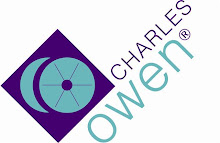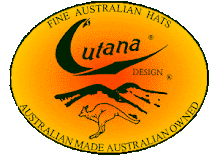At the beginning of the year I happened to read about the dreadful loss of life of Newfoundlanders at Beaumont Hamel in France during the Battle of the Somme. The Newfoundland regiment was all but wiped out in an unsuccessful 30 minute assault on July 1st 1916, the first day of the 'Big Push' offensive. After the war the Newfoundland government bought the site to preserve it as a memorial to those who fell there, and in view of my forthcoming Newfoundland adventure I was immediately stirred to make a pilgrimage.

Looking on the map, I realised it was not far from another couple of battlefield sites I had long wanted to visit, and this spurred me on to arrange a few days sightseeing in France. So at the end of February I found myself at Beau Hamel, below the dramatic bronze statue of a caribou, emblem of the Royal Newfoundland Regiment. Standing on a rugged rock cairn, it appears to give a mournful last call over the bloody battlefield where so many Newfoundlanders tragically lost their lives.
The Canadian government fund Canadian students to act as free guides for the memorial site, and we were lucky enough to have a young Newfoundlander to show us around. And she was able to show us the name on the monument of a great uncle who had lost his life here, which really drove the reality home.
The site has since been bought back by the French government, but continues to be leased and administered by the Canadians.
The site is remarkable in that it has preserved the remains of the trenches that existed a hundred years ago. The view below is looking from the base of the monument across the trenches to the former German line beyond - roughly where the far line of trees is. Terrible to think that almost a hundred years ago this peaceful green pasture would have been a bloody sea of mud, barbed wire and bodies.

The Allies had bombarded the Germans for a week before the offensive, but although this had caused damage, the German dugouts were largely untouched and machine gunners who had retreated from their posts were able to return quickly once the bombardments lessened. Two assaults by British troops on the first day of the offensive failed with heavy casualties. Then unhappily a white flare sent up by the Germans was mistaken for a British signal that the second assault had succeeded. The Newfoundlanders were ordered into battle.
When they attacked, the connecting trenches were already choked and impassable with dead and dying from the previous assaults, and in running over the brow of the hill the Newfoundlanders were sitting ducks for the German machine guns; machine guns that were supposed to have been put out of action by the bombardments of the previous week.
Out of 801 men participating in the assault that day, only 68 turned up for roll call the next morning, 720 having been killed or wounded. A relatively insignificant number compared with the huge casualties suffered by other members of the allied forces, but a 90% casualty rate and utterly devastating for the tiny population of Newfoundland.
Only 2500 miles to Newfoundland!
An arrow on the Caribou Memorial.

We also took the opportunity to visit a similar site on the Somme where 400 out of 676 Welsh soldiers of the 14th (Swansea) battalion were killed or wounded in the Big Push on 10th July 1916 trying to gain control of Mametz Wood. In this case the memorial was a rather cartoonish Welsh dragon, not quite as impressive as the caribou, though the site was just as emotive.
Mametz Wood is in the background of the photo, with the dragon overlooking the valley where so many Welshmen died.
It was here that poet Seigfried Sassoon (Royal Welsh Fusiliers) made a single handed attack on the 4th July 1916

The final pilgrimage was to the grave of Oswyn St Leger Davies, youngest son of the Davies family who lived at our house Ffrwdfal (formerly Froodvale Mansion) for many years. It was Oswyn's father John Morgan Davies who built an imposing south facing frontage onto the existing building in 1867-8 when he moved here with his young wife Jane, to transform it into a larger country house. See
Ffrwdfal Country House for the bed and breakfast business I run sporadically between jaunts abroad.
Oswyn St Leger was tragically killed on the western front shortly before the end of the First World War and is buried at Bienvilliers, near the Somme.
And we were able to stay nearby at the lovely
Chateau de Saulty , much recommended if you do not need an evening meal on site.











































